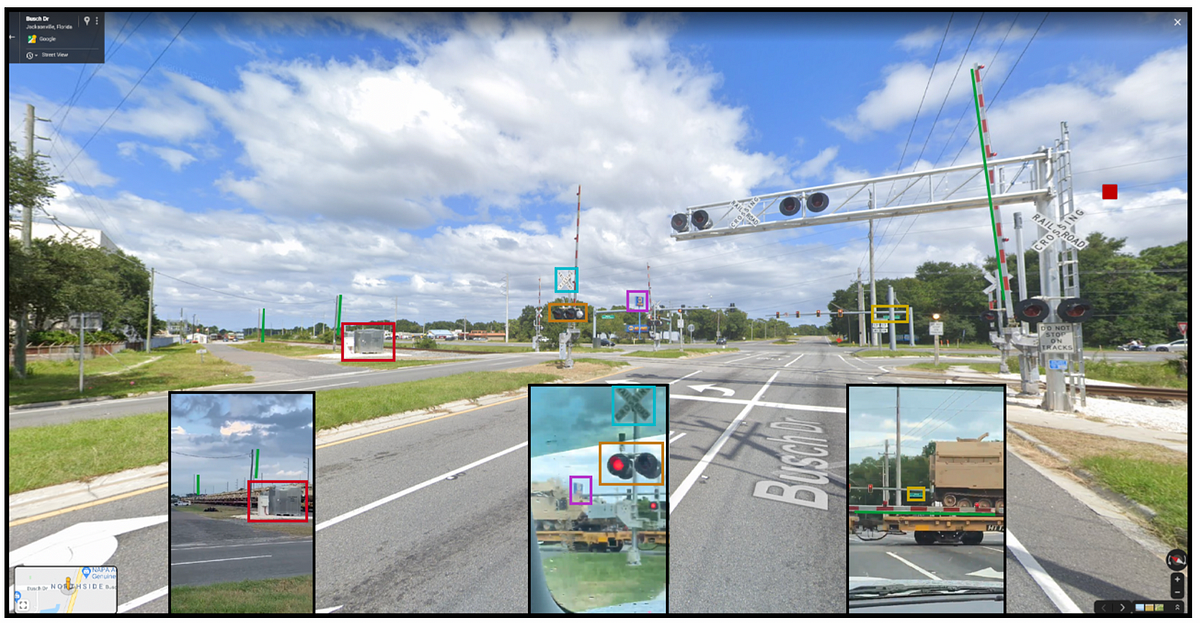Disinfo targeting South African Defence Force surges amid COVID-19 lockdown
South African Twitter accounts recycled old
Disinfo targeting South African Defence Force surges amid COVID-19 lockdown

South African Twitter accounts recycled old images and decontextualized videos as the country began a 21-day military enforced lockdown.

Several South African Twitter accounts published disinformation related to the recent countrywide deployment of the South African National Defence Force (SANDF). As social media reacted to the news of the military’s planned involvement in a nationwide lockdown in response to the COVID-19 pandemic, related disinformation seems to have kept in lockstep.
In two separate instances, Twitter accounts published videos originating from the U.S. and Brazil, claiming they portrayed current events transpiring in towns across South Africa. In other cases, photographs from a SANDF military demonstration held in February this year and a Boko Haram assault against Nigerian soldiers were taken out of context and used to drive engagements on such tweets.
Despite emergency regulations passed in March 2020 that criminalized the intentional publication of false or misleading information about the virus, these users appear unfazed.
While the motives behind these accounts are unclear, they do not appear to be coordinated.
Lockdown
The SANDF was deployed to support the South African Police Service (SAPS) during a nationwide coronavirus-related lockdown announced by President Cyril Ramaphosa on March 23.
At the time, South Africa had little more than 400 positive coronavirus cases and no fatalities. South Africa’s number of positive cases has since increased to over 1,300, alongside the country’s first three fatalities.
Shortly after the announcement, social media mentions of the SANDF spiked as the debate about the military’s deployment played out on Twitter. This continued throughout most of the week as citizens began spotting military vehicles and soldiers around the country.

But some users made use of the social media furor around the army’s deployment to distribute old and decontextualized images and videos between the legitimate accounts of the SANDF’s presence.
This activity comes at the same time as reports of overreach by the SANDF and SAPS in enforcing the lockdown are surfacing, making it difficult to distinguish between actual and fabricated incidents.

Boko Haram
A tweet by user @RoodyFashinoSA claimed that South Africa had already lost more than 80 soldiers within the first nine hours of the lockdown. It also implied that South Africa’s president was involved in a coverup about this. In support of these assertions, the account attached several images of bloodied soldiers and a burnt-out truck, relying on the reader’s impression that these were SANDF soldiers.
But the images seems to have been copied verbatim from an earlier tweet by a Nigerian user several hours earlier, in which it was reported 80 Nigerian soldiers died in a Boko Haram ambush.

The beach rumor
A tweet by user @Qing_Draya claimed the SANDF violently apprehended civilians at a beach in Durban, in Kwa-Zulu Natal.
The same video, however, was published by another Twitter user on March 21, several days before the South African lockdown was even announced. It attributed the violence to Brazilian authorities.

Tank Tracking
A tweet by user @bigkid850312 contained the #SANDF hashtag alongside a video of several armored vehicles being transported on a railroad track. The tweet insinuated that the image was taken in Pietermaritzburg, a town in Kwa-Zulu Natal.
The video is clearly not of South African origin. The road markings and traffic lights present in the video are different to those in South Africa, and the author’s vehicle is left-handed, despite the fact that South Africa uses right-hand drive vehicles. In addition, the vehicles being transported were Bradley fighting vehicles, which are not used by the SANDF.

The same video has been circulating among international Twitter communities, with some claiming the image is from California, New Jersey, New York, Tampa and Fort Lauderdale, Florida and London. Several of these users claimed to have known the author of the video personally.
But the DFRLab geolocated the video to this intersection in Jacksonville, Florida after identifying an auto parts store in the background of the video. A search for similar stores near railway level crossings identified the intersection of Busch and Main streets.

Desaturated
A tweet by user @Greg6Boer included an image of a convoy of military vehicles. The front of the convoy featured two Bateleur FV2 127mm multiple rocket launchers mounted on SAMIL 100 Kwêvoel base vehicles, followed closely by two SAMIL 100 gun tractors towing G5 155mm howitzers.
The tweet insinuated that the vehicles were intended to be used against civilians as part of the lockdown.
But the image bears no relation to the national lockdown, and was published more than a month earlier as part of the SANDF’s Armed Forces Day demonstration on February 21, 2020. The image was also partially desaturated to remove the tell-tale red portable restrooms on the side of the road.

Jean le Roux is a Research Associate, Sub-Saharan Africa, with the Digital Forensic Research Lab.
Max Rizzuto is a Research Assistant at the DFRLab based in Washington, D.C.
This article was written and published in collaboration with our partners at Code4Africa.
Follow along for more in-depth analysis from our #DigitalSherlocks.

